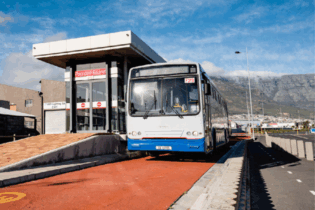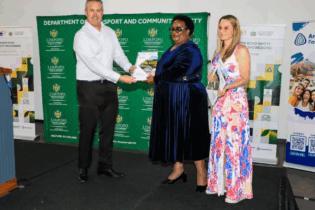A three-day African runway safety workshop was on Monday opened in Accra to deliberate on practical measures to improve runway safety and to increase awareness on the part of stakeholders.
The workshop attended by representatives of the International Civil Aviation Organisation (ICAO) International Air Transport Association (IATA), International Federation of Air Traffic Controllers’ Associations (IFATCA) International Federation of Airline Pilots’ Associations (IFALPA), among other stakeholders is being organized by the Ghana Civil Aviation Authority (GCAA) in collaboration with the Ghana Airports Company Limited (GACL) and with support from ICAO. Alhaji Collins Dauda, Minister of Transport in a keynote address read for him by Mr. Twumasi Ankrah Selby, Chief Planning Officer at the Ministry, stated that improving runway safety was among Ghana’s priorities in ensuring safety in aviation and assured participants that his ministry would continue to support the sector in its efforts by implementing good policies and various ICAO programmes and interventions to bring awareness to industry stakeholders. He noted that although runway incursions and excursions had not been a problem in Ghana, the accident in June 2012 when an aircraft belonging to Allied Air Cargo was involved in a runway excursion accident at the Kotoka International Airport killing 10 people, served as a wake-up call for all stakeholders in aviation to work as a team to tackle the issue. He said the Ministry in response, had charged the GCAA and the GACL as well as other stakeholders to develop a comprehensive plan of action and to take proactive measures to mitigate lapses that could result in runway incursions or excursions. “Runway safety problems have been identified as a worldwide safety concern for years so the Ministry is pleased that the GCAA and GACL are working closely with the ICAO and IATA and other stakeholders in the aviation industry o use this workshop to find solutions to this phenomena” he stated. Air Commodore Kwame Mamphey, Director-General of the GCAA in his welcoming address said the Authority was aside from replacing the old instrument landing system or localizer, which was destroyed by the Allied air cargo aircraft in June, was also engaging Air Traffic and Navigation Service(ATNS) of South Africa to conduct a World Geodactic Survey (WGS-84) Survey which would allow for the realignment of a given position to the satellite and thus enable the GCAA to use satellite navigation instead of ground based equipment like the Localiser and the VOR. Air Commodore Mamphey said the current situation which used ground based navigation meant pilots had to make their approaches based on those round based equipment and added that the satellite navigation would allow the air traffic controller to give pilots a clearance which would aid them to fly as directly as possible to their target, thus preventing runway incursions or excursions. He said the aim of the workshop was to ensure that participants would have a clear understanding of what could lead to runway excursions and incursions and educate the various airlines and institutions on what to do and measures to take to avoid such incidents. “Runway safety encompasses all matters concerned with the identification and prevention of hazards that might impede the safe take-off, taxing and landing at any aerodrome. Runway safety is a function of not only infrastructure but interdependence of systems, people, procedures, weather and human factors. It is therefore necessary that runway safety programmes are implemented using a multi-disciplinary approach as recommended by ICAO.” He stated. He also noted that ICAO’s transition into continuous monitoring approach (CMA) and the establishment of State Safety Programmes (SSP) by states as well as the implementation of Safety Management Systems (SMS) by service providers offered a unique opportunity to better monitor Runway Safety issues, adding that the GCAA has made it a top corporate strategic plan to ensure the SSP are fully established by the regulator and SMS implemented by all the service providers.“Teamwork enhances safety, efficiency and promotes a reliable aviation industry, hence issues of aviation safety must be a concern for all and we must be interested in supporting one another to reach this common goal especially as the jobs in the industry are interconnected,” he said.
Mr Gaoussou Konate, ICAO Deputy Regional Director, Dakar on his part described Runway safety as the most prominent emerging safety issue affecting operations worldwide and in Africa. He referred to the Allied air crash, saying that team efforts during the workshop would go a long way in contributing to prevent such tragedy in the future. “I am pleased to note that we (States, Airlines, Airport Operators, Air Navigation Service Providers, Pilots, and Controllers) are jointly engaged in this workshop to build safety in runway operations” he said. He also commended IATA and the GCAA for their ‘relentless efforts at the safety improvements as it would lead to sustainable development of air transport in Africa as stated in ICAO’s theme for the 2012 International Civil Aviation Day – “Assistance and Cooperation for Globally Sustainable Air Transport”. Mr Konate also noted that the GCAA had played a pivotal role in the implementation of Performance Based Navigation Routes in Africa, with two routes implemented, thus lessening aviation’s environmental footprint and adverse effects. “Already from reports received on user benefits, a satisfied operator has indicated that the carrier is saving in a year, approximately 4,200 tonnes of fuel which corresponds to 13,200 tonnes of avoided CO2 emissions”, he said. Source: http://www.ghananewsagency.org







